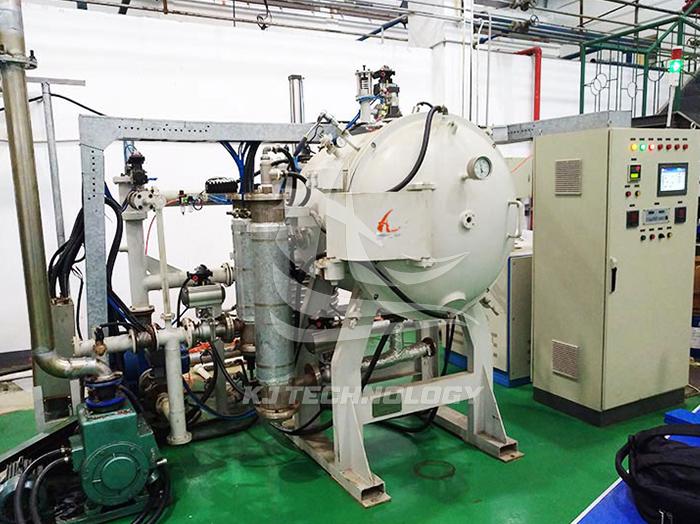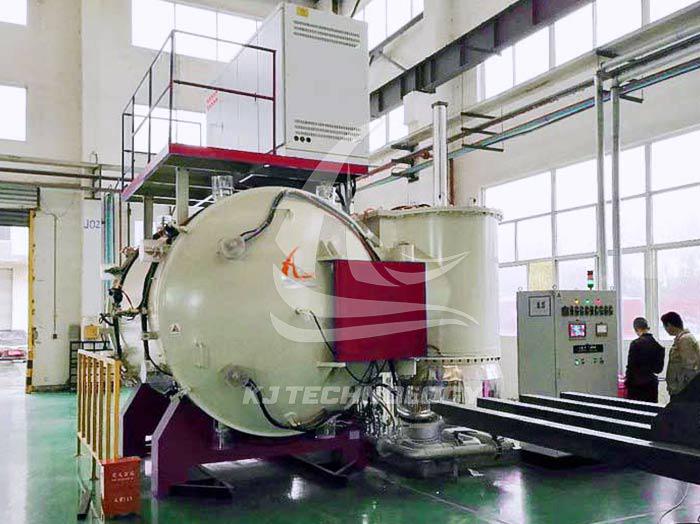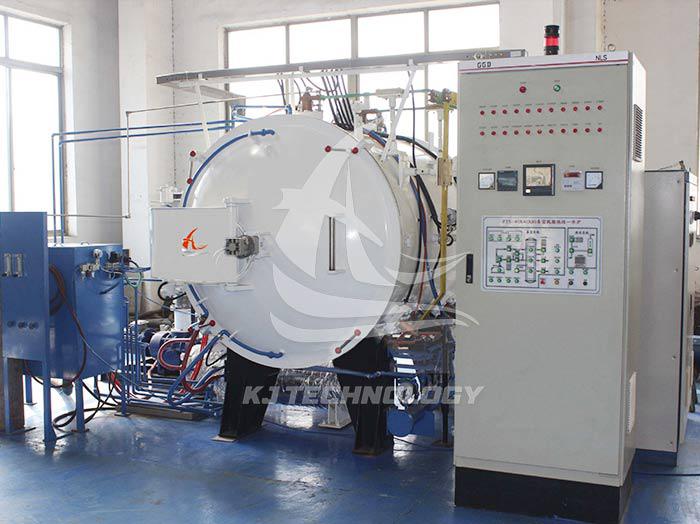Daily maintenance of high vacuum and high temperature brazing electric furnace
 08-26-2025 Author: KJ technology
08-26-2025 Author: KJ technology
As a precision heat treatment equipment, the daily maintenance of high vacuum and high-temperature brazing electric furnaces is crucial for ensuring equipment performance, extending service life, and ensuring process stability. The following are detailed daily maintenance points and operating specifications:
1. Daily maintenance items
Furnace cavity cleaning
Operation: After each use, wait for the furnace body to cool to a safe temperature (usually below 50 ℃), and use specialized tools (such as vacuum cleaners, soft bristled brushes) to clean the remaining solder debris, oxides, and dust in the furnace chamber.
Attention: Avoid using hard tools to scratch the inner wall of the furnace (such as graphite or ceramic materials) to prevent damage to the surface coating.
Frequency: Execute after processing each batch of workpieces.
Vacuum system inspection
Mechanical pump: Observe whether the oil level is within the scale range. If the oil is turbid or contains water, it should be replaced in a timely manner (usually every 3-6 months).
Molecular pump: Check if the running sound is stable, without abnormal vibration or noise; Confirm that the cooling water flow rate is normal (usually ≥ 5L/min) and the water temperature is ≤ 30 ℃.
Vacuum pipeline: Check whether each connection is loose, and use soapy water to detect the leakage point (with a focus on checking the flange interface and valve sealing).
Heating element inspection
Appearance inspection: Check whether the heating element (such as graphite heating tube) is broken, oxidized or deformed by observing the gap between the window or furnace door.
Tightening connection: Confirm that the connecting bolts between the heating element and the electrode are not loose, to avoid increasing contact resistance and causing local overheating.
Safety device testing
Overtemperature alarm: Manually trigger the temperature controller to set the overtemperature value and verify whether the alarm device rings or stops.
Emergency stop button: Press the emergency stop button to check if the equipment immediately stops running and if the vacuum system and heating system automatically shut down.
2. Weekly maintenance items
Cooling system maintenance
Waterway cleaning: Close the cooling water main valve, remove the filter cleaning mesh cover, and remove scale and impurities (if the water quality is poor, the cleaning cycle needs to be shortened).
Water flow detection: Use flow meters to measure the water flow of each branch, ensuring that the cooling water flow of key components such as heating elements and molecular pumps meets the standard.
Water quality inspection: Use pH test strips to test the acidity and alkalinity of the cooling water (neutral is preferred) to avoid corrosion of the pipeline.
Electrical system inspection
Wiring Tightening: Check if the main circuit wiring terminals inside the power cabinet are loose, and use an infrared thermometer to measure the temperature at the wiring point (should be ≤ 60 ℃).
Insulation test: Use a megohmmeter to measure the insulation resistance between the heating element and the furnace body (should be ≥ 1M Ω). If it is lower than the standard, the machine should be shut down for maintenance.
Sealing maintenance of furnace door
Sealing ring cleaning: Use a dust-free cloth dipped in alcohol to wipe the fluororubber sealing ring to remove oil stains and impurities.
Sealing test: After closing the furnace door, evacuate to 10 ⁻ Pa, maintain pressure for 30 minutes, and observe the increase in vacuum degree (should be ≤ 10Pa/min).
3. Monthly maintenance items
Deep maintenance of vacuum pump
Mechanical pump oil change: Drain the old oil, flush the pump chamber with new oil 2-3 times, and then inject new oil to the upper limit of the scale.
Lubrication of molecular pump bearings: For magnetic levitation molecular pumps, special lubricating grease should be added according to the instructions (usually once every 12 months); For mechanical bearing molecular pumps, bearings need to be replaced regularly.
Thermocouple calibration
Comparative calibration: Place the thermocouple inside the furnace and a standard thermometer (such as a platinum resistance thermometer) in the same heat source, and compare the reading deviation (should be ≤± 2 ℃).
Position adjustment: If the deviation exceeds the standard, check the insertion depth and fixing method of the thermocouple, and reinstall it if necessary.
Inspection of heat shielding device
Structural integrity: Check whether the graphite or molybdenum heat shield plate is cracked or deformed, and replace damaged parts in a timely manner.
Surface cleaning: Use compressed air to blow the inner surface of the heat shield plate to remove adsorbed solder vapor and dust.
4. Quarterly maintenance items
Furnace structure inspection
Furnace shell deformation: Use a spirit level to check the levelness of the furnace body (should be ≤ 0.1mm/m), and adjust the anchor bolts if it tilts.
Ultrasonic testing of key welding areas such as furnace shells and doors to identify potential crack hazards.
Control system upgrade
Software update: Contact the manufacturer to obtain the latest version of temperature control program and vacuum control software, fix known vulnerabilities, and optimize control algorithms.
Parameter backup: Regularly backup equipment operating parameters (such as temperature rise curve, vacuum setting value) to prevent data loss.
5. Annual maintenance project
Comprehensive overhaul
Furnace renovation: Carbonization treatment (high-temperature baking to remove adsorbed impurities) or re spraying of silicon carbide coating on the graphite furnace.
Vacuum system leak detection: Use a helium mass spectrometer leak detector to perform a full system leak detection on the furnace body, vacuum pump, and valves (leakage rate should be ≤ 1 × 10 ⁻⁹ Pa · m ³/s).
Security authentication update
Explosion proof certification: If the equipment is used in flammable and explosive environments, it needs to be re certified for explosion-proof performance by a third-party organization every year.
Pressure vessel inspection: Regular inspections shall be conducted on the furnace body parts under pressure in accordance with the requirements of the Special Equipment Safety Law.
6. Maintenance records and archive management
record content
The date, project, model and quantity of replaced parts, test data (such as vacuum degree and insulation resistance), and operator signature for each maintenance.
Archival Storage
Establish electronic maintenance records and store them by equipment number for easy traceability of historical data and development of preventive maintenance plans.
7. Common problem handling
Insufficient vacuum degree
Reason: Aging of sealing ring, contamination of vacuum pump oil, and leakage of pipeline.
Solution: Replace the sealing ring, change the oil, repair the leak with silver welding, or replace the pipeline.
Heating power decreases
Reason: Heating element oxidation, increased contact resistance, power supply voltage fluctuation.
Solution: Clean the surface of the heating element, tighten the wiring, and install a voltage regulator.
Poor temperature uniformity
Reason: Damaged heat shield plate, unreasonable layout of heating elements, and furnace pollution.
Solution: Replace the heat shield plate, optimize the layout of heating elements, and clean the furnace.








